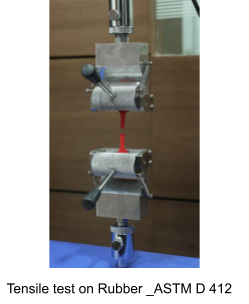

If you work in manufacturing product making or construction then you need to know how strong your materials are. Will they stay in shape under load or will they break. This is where the tension test also called tensile strength testing helps a lot.
This test shows how much force a material can take before it stretches or breaks. It is used for metals plastics and polymers and gives you the right information to make better choices during design or production.
In this guide you will learn what a tension test is how it works what tools are used and what the results mean. We have also added a simple table and answers to common doubts to help you understand everything easily.
A tension test shows how a material reacts when it's pulled apart. It helps find important properties like:
The material is stretched at a slow rate to the point of fracture, while the applied force and the extension are recorded. The information is then used to generate a stress-strain curve that reveals a great deal about how strong or ductile the material is.
Tensile tests are used in many industries:
Testing helps companies ensure that products are strong enough, safe to use, and meet industry standards.
Before performing the test, it is helpful to understand a few basic ideas:-
All of these are captured in a stress-strain diagram during the test.
Here’s how the test is usually done:

To get good results, the right machine is important. Here's a quick comparison of commonly used testing machines:
| Machine Type | Best For | How It Works | Force Range | Accuracy |
| Manual Tensile Tester: | Simple plastic or rubber tests | Hand-operated | Up to 5 kN | Moderate |
| Digital Tensile Tester: | Metals, plastics, and polymers | Controlled digitally | 1 kN to 100 kN | High |
| Universal Testing Machine: | Wide range of materials | Computer-assisted | Up to 500 kN | Very high |
Modern machines make it easier to get accurate, detailed results, especially when testing different types of materials.
These are the key values you’ll get from a tension test:
These values are essential when deciding if a material is suitable for a specific job.
In factories and workshops, tension testing is used to:
From cars to packaging, every product benefits from strong, tested materials.
Confused? Call our experts now!
Digital machines make the process smoother and more reliable by:
They are particularly useful in laboratories and factories where repeated testing is required.
To get the best results:
The tension test is one of the best ways to find out how strong a material is when force is applied. It gives you clear values like yield strength and ultimate tensile strength that help in design safety and long lasting use
Whether you are using metal plastic or polymer knowing how strong and flexible it is can make a big difference. With proper machines and careful testing you can choose the right materials and avoid problems in the future
Q1. What is the difference between yield strength and tensile strength?
Yield strength is the point when a material starts to stretch permanently. Tensile strength is the maximum force the material can take before it breaks.
Q2. Why do we use a stress-strain curve?
The stress-strain-curve helps visualize how the material behaves as it's stretched. It shows where it starts to bend, when it becomes weak, and when it finally breaks.
Q3. Can one machine test both metals and plastics?
Yes. A universal testing machine (UTM) is designed to handle many materials, including metals, plastics, and even rubber. Just make sure the grips and settings match the material.
Q4 How often should the testing machine be checked or calibrated?
Most companies recommend checking the machine once every year. Doing regular calibration helps you get accurate and reliable results every time.
Need a high-precision Digital Tensile Tester for your quality lab? Presto offers advanced and durable testing machines at the most competitive rates in the market.
Call us today for the best Digital Tensile Tester Price: +91 9210 903 903
Email us at: info@prestogroup.com
Don’t wait! Contact our team now to get a quote, brochure, and expert consultation on the right Digital Tensile Test for your needs.
Related Blogs

Cyclic Salt Spray Testing Machine explained with diagram, test cycles, working process, and industrial applications. Learn how cyclic corrosion testing ensures product durability and compliance.

"Improve paper quality testing accuracy by up to 85% with a Cobb Tester. Reliable, fast, and essential for packaging and paper manufacturing quality control."

Prevent product failures with torque testers that ensure accurate and consistent tightening force for optimal performance.